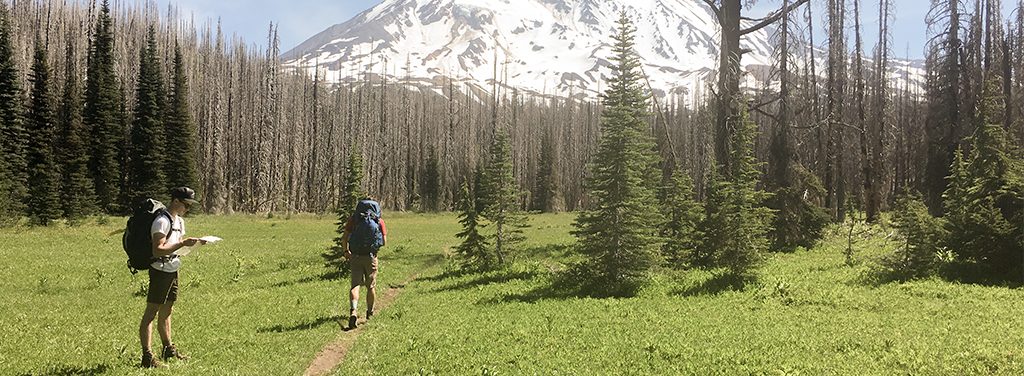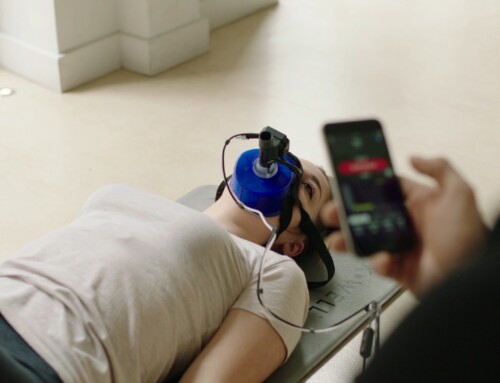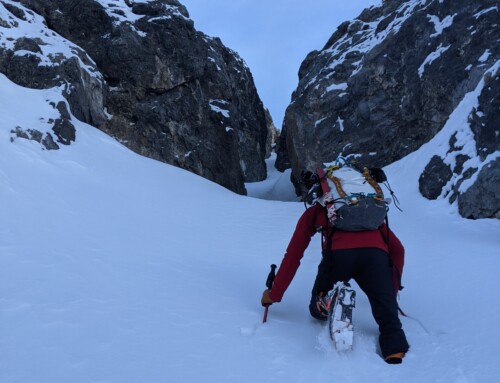Train For Your Summer Hikes Like A Pro Mountain Climber
July 12, 2018 — Eric Ellis
Original story written for the fully blog, available here.

With some simple, work-friendly exercises and the right food, you can conquer your summer hiking list
Jeremy Currie helps serious rock climbers and mountaineers at Evolution Healthcare and Training to summit their next big peak. Martin Tull is an accomplished rock climber and a leader in the Lifestyle Medicine movement. We asked them both what advice they have for us average hikers and weekend warriors to make the most of our summer hiking seasons. Here’s what they have to say about using our weekday workouts and nutrition plan to conquer our own treks.
Tip #1: Schedule simple workouts into your work day
From Jeremy Currie:
As someone who trains climbers and mountaineers, I can tell you there’s a lot you can learn from these intense athletes that are easy to apply to your own summer adventure training. Getting in condition doesn’t have to be complicated. In most cases, keeping things simple and being consistent in your training will help you to overcome the challenges you face while on your hike.
Schedule realistic workouts — in PEN!
First and foremost, start moving if you haven’t already begun! The goal while outside hiking is to enjoy the experience and not to have to suffer through it. By getting yourself in better condition to tackle your climb or hike you can ensure that you will get the most out of your adventure and won’t be dissuaded from attacking the following weekend hike.
To set yourself up for success you must schedule time to move or exercise. Simply penciling in time to move we often create excuses as to why we can’t go to the gym or even move around from our desk during a busy workday. Write down in pen in your planner and make an appointment with yourself to move!
Do these things during your lunch break
Here are a few ideas of things you can do during your 45 min lunch break to help prepare you for your next hike:
- Jog around the block for some slow steady cardio similar to what your heart and lungs will experience while on your hike. To scale this up a notch, incorporate short bursts of speed, followed by slow recovery jogging to get even more out of your cardio session. If you’re looking to kick-start your oxygen carrying capacity to make those climbs at elevation even easier, head over to Evolution Healthcare and Fitness’ one-of-a-kind altitude training room.
- Focus on your quads. Hit the stairwell and do repeated climbs up and down the stairs. Feeling extra energetic? Kick it up a notch and try adding a little extra weight to your body. Load up some books or your laptop in your backpack and GO!
Turn your desk into a workout station
If you’re stuck at your desk and can’t get away from that busy project you’re working on, take a quick break and move! Not only will this help get you ready for your hike, it will also give you a little mental break from your work so you can come back to it feeling mentally refreshed.
Desk push-ups
If push-ups from the floor are too challenging (or a little weird for your office environment), use your adjustable-height desk to dial in on different heights to allow you to perform your pushups with good form. Start off with 4 rounds of 5 to 8 reps. Key in on your movement pattern and make the few reps you are doing challenging. It’s always better to do fewer high-quality repetitions versus many repetitions with poor movement quality.
Squats
Body weight squats are a great way to work your core and leg muscles, as well as get your heart rate up. Try to maintain an upright posture as you perform them. Hold a book or water bottle out in front of you to act as a counterbalance or even elevate your heels on your Topo standing desk foot mat. Start off with 3 rounds of 12 reps. Saddle-seat chairs will help open your hips to allow a more fluid squat pattern.
Reverse lunges
Stay tall in your posture and feel a stretch in your back leg as you descend into your lunge. Elevating your front foot on your anti-fatigue/standing mat can increase the range of motion you perform your movement in making you work harder. This movement will help build strong leg muscles to carry you up on your climb. Begin with 6 to 8 reps per leg for 4 total sets.
Calf raises
Start with your toes elevated on the edge of your anti-fatigue/standing mat and reach up onto your tiptoes. Fully’s Topo Mat has a raised rim along the back, and works great for this exercise. Hold at the top, then slowly lower yourself down. Make the movement more challenging by moving more slowly, or by using just one leg at a time. Alternatively, if you don’t have a mat, you can simply stand on the edge of a yoga block, book or a few rolled towels. Start off with 3 rounds of 15 reps.
Hip hikes
Stand on the edge of your anti-fatigue/standing mat on one leg, and then hike your hip up as high as you can. Fully’s Topo Mat also works great for this exercise. You’ll be working your glute muscles and low back muscles, both of which are important to have stay strong as you hike. Complete 3 rounds of 12 reps per leg.
As with any beginning program, take a couple of days off before repeating the same movement. This will allow you to gauge whether or not you need to adjust your rep and set schemes. If you have questions about how to make movements more challenging, seek out a qualified trainer.
From Martin Tull:
For those who are learning to rock climb, or want to incorporate it into their outdoor adventures, I’d note that most people feel it’s all about upper body strength. In reality, the more you use your lower body, the less energy you need to get to the top.

Train like a mountaineer
For that reason, many of the exercises mountain climbers do to train are great for rock climbing. I recommend balancing work like pull-ups, rowing and lat pulls with push-ups, tricep extensions and lots of core strengthening.
Making the most of my work day by standing as much as I can. I have a standing desk where I do most of my work. I make sure that I’m paying attention to my posture when I can.
Also doing a few squats while I’m on the phone or thinking about how best to respond to an email. Even these small movements throughout the day can make a big difference in my training.
Start at a good climbing gym
Since climbing outdoors requires a lot of specialized equipment and safety knowledge, I think the best place to start climbing is in an indoor gym. You can learn all the basics from the pros, whether it’s how to belay, tie your knots, or even advanced skills like anchoring and lead climbing. But when it comes time to go outside for the first time, just be sure to go with experienced climbers. The “who” you climb with is even more important than the “where.”
 Tip #2: Fuel yourself with the right nutrition
Tip #2: Fuel yourself with the right nutrition
From Jeremy Currie:
No good training plan is complete without a good nutrition plan. But how you eat while you train and how you eat while you’re on an actual hike is a bit different.
How to eat while training
Eating a quick snack 30 to 45 minutes before you do a training workout will help fuel your efforts. A proper mix of carbs, fats, and proteins is key. The fats will help sustain your workout and burn slowly. Your carbs will burn up rather quickly but will give you that initial boost you need to get going. Your proteins help rebuild your muscles as you’re working out so you can maintain the muscle you have and build new muscle on top. Everyone will feel better with different foods so it’s important to experiment and listen to your body on what works best for you.
How to eat after a training session
Recovery meals are very important to make sure you get in after your training. They will help to ensure you replenish what was burned during your workout allowing you to attack another workout the following day without feeling fatigued.
When it comes to recovery, look for carbohydrates and proteins in a 3 to 1 ratio (3 carbs to 1 protein). The carbohydrates will replenish your muscle glycogen (sugars), and the protein will be used to build up new layers of muscle. Shoot to get at least 15 to 20 grams of protein post workout.
Eat right during your hike
Try to stay properly fueled during your hike. On average, shoot to consume at least 100 calories every 30 minutes, and make sure you begin consuming calories even if you are not hungry. The goal is to have the fuel in your body getting ready to work. If you wait to the point that you feel hungry, you’ve waited too long.
Every person’s body is different, so be sure to experiment with fueling options. Quick-burning sugars mixed with fats often work well together. A great snack: some good old-fashioned trail mix. If you have more time on your hands, try out these snack recipes from Backpacker.
Hydrate!
Hydration is key especially as the weather gets warmer. Seventy percent of our body is made up of water, so it’s important to maintain proper hydration levels to stave off thirst and muscle cramps.
When training and hiking, aim to get at least 8 ounces of water in every 15 minutes or so. If you’re a heavy sweater, you may need more or may need to incorporate the use of electrolytes. A great natural electrolyte is coconut water, which is most refreshing if you can keep it cold. I often use Nuun electrolyte tablets that quickly dissolve in water. I often find having the little bit of flavor from the electrolyte encourages me to drink more water along the trail.
From Martin Tull:
To train and climb, I eat for fuel and for flavor. I eat a lot of whole foods, minimally processed, and mostly plants. I’ve found that I recover faster, feel lighter and generally, it just aligns with my desire to reduce my environmental impact as well.
Tip #3: Listen to your body and your doctor
From Jeremy Currie:
It’s important when starting any new training regime or mixing up your diet, to consult with your doctor to make sure you are healthy enough to partake in your activities. As a general rule of thumb, listen to your body. If its feeling tired and exhausted, this may be an indicator that you are overtraining or not fueling yourself properly. Take a day of rest and see what happens. If you experience any pain during any movements, stop! Movement shouldn’t be painful. Seek the help of a professional trainer or physical therapist if pain persists.
 About Jeremy Currie
About Jeremy Currie
I graduated from Oregon State University with a B.S. in Exercise and Sport Science. I’ve worked with Fitness Over 50 — a fitness facility devoted strictly for the mature adult — in Corvallis, Ore., and for Courthouse Fitness in Salem, Ore. At Courthouse, I studied with the strength and conditioning specialists and learned a great deal about kettlebells and functional training. This is where my passion lies.
The style of training I provide at Evolution Healthcare and Fitness is suited for all levels of fitness and is geared towards — improving functionality and mobility. I have worked a great deal with ultra runners, serious climbers, and mountaineers, as well as the average weekend warrior. I aim to provide the training, knowledge, enthusiasm, and motivation required to help my clients meet and exceed their goals.
Currently training out of Evolution Healthcare and Fitness.
 About Martin Tull
About Martin Tull
Over the years, I’ve been a strategist and adviser to a number of initiatives working to help make a better world, reduce environmental impact and improve health and food choices. I also spent many years in the outdoor recreation industry, getting people equipped for their adventures and then leading them outside. Rock climbing has always been both a personal passion, as well as a professional pursuit. These days, I’m excited to lead partnerships for the American College of Lifestyle Medicine, helping to grow the movement of doctors, coaches, and nurses who are treating and reversing disease by encouraging people to think about their lifestyle and how to optimize it for health and vitality.




